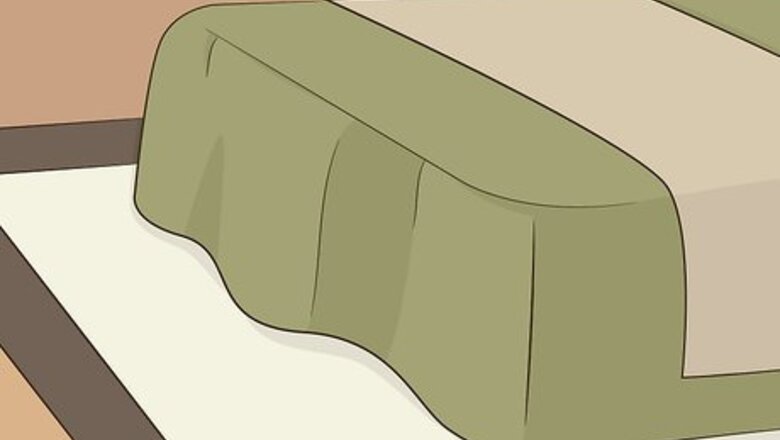
views
Deciding Where to Place Layered Rugs
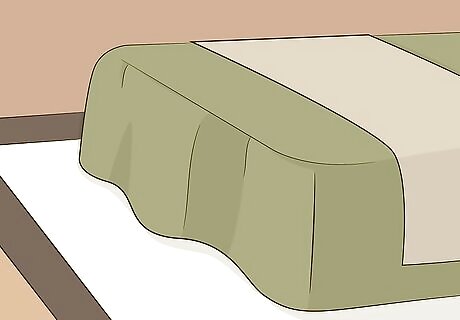
Use rugs to fill in empty spaces. A couple rugs can make a welcome addition to lifeless gaps that disrupt a room’s furnishings, like the vacant area in the middle of the living room or the foot of the bed. By adding rugs to these places, you can tie the room together and prevent negative space from becoming visually jarring. Start with a basic layering scheme—neutral texture on bottom, fancy colors and patterns on top. Use rugs to cover awkward bare patches in front of couches, hearths and entryways.
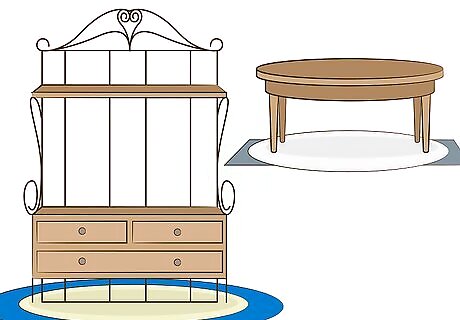
Lay rugs under furniture to anchor the pieces. Elevated pieces like coffee tables, baker’s racks, and wire shelves can look isolated when set apart by themselves. Rugs provide a useful foundation that roots floating decor with a base of delightful color and texture. The right pairing will let the eye transition seamlessly from the floor upwards. Choosing bright hues and eye-catching designs can help you refocus attention to the important parts of the room. Putting a rug under a lone chair, such as a rocker in a nursery, will dress up the area. A seating area, such as one comprised of a sofa, table, and chairs, will look more cohesive and connected if everything is anchored with a rug. Double up extra large rugs to go under an entire seating area.
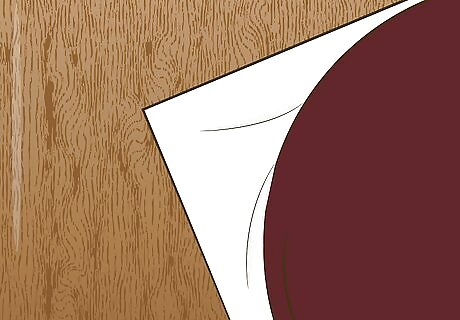
Utilize rugs to cover and protect other surfaces. Stacking up your rugs can offer function as well as fashion. If your home is outfitted with high-risk flooring, such as light-colored carpet or hardwood, it could likely benefit from a defensive barrier. A dual layer of rugs will safeguard easily-damaged floors from spills, scratches and other accidents. Rugs are perfect for high-traffic areas, like the entryway of an exterior door. They can add safety to a slippery floor as well as collect mud and dust that may otherwise be tracked throughout your home. Opt for rugs with dark colors and short, neat fibers. These are generally easier to clean and won’t show stains as readily. Spare hardwood and tile from from being marked up by sliding chairs or barstools.
Arranging Multiple Rugs
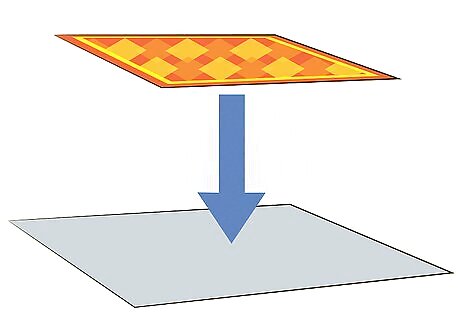
Place a small rug on top of a larger one to create a frame. The difference in size will leave a portion of the underlying rug exposed, producing a harmonious framing effect. This is probably the simplest way to layer rugs, and one of the most pleasant and effective from a design standpoint. Top elaborately patterned rugs with neutral colors in rooms in need of a modest infusion of flair. Make sure the rugs are made to the same basic dimensions. Otherwise, concentric layering can end up looking lopsided.
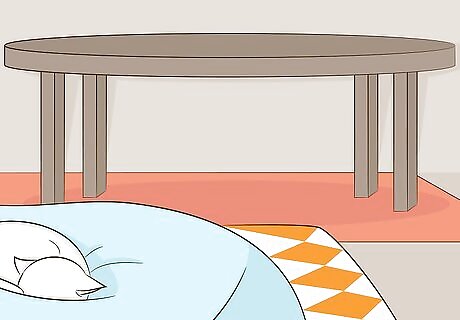
Overlap 2 or more rugs for a homey look. If your goal is to make a given room look a little more relaxed, leaving the rugs slightly askew will help you achieve this. Uneven layers will also allow you to switch things up in areas with overly linear organization and fill oddly-shaped nooks. For a more effortlessly casual style, drape the rugs in a more or less random manner. You can also offset rugs at regular intervals, keeping the edges and corners lined up, to add depth without making the setup look sloppy. Avoid covering up more than half of a rug with another, or they make look unbalanced. Choose a thin, pliable rug to go on top of another rug in order to minimize trip hazards.
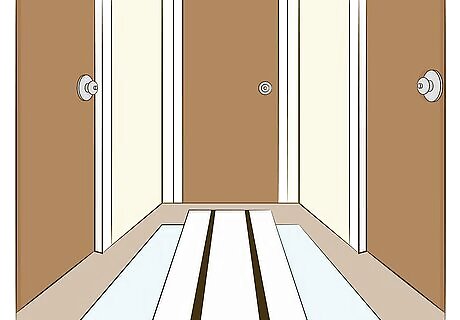
Set down a runner for a pop of color or texture. An oblong or rectangular rug stretched over a broader covering performs the same function as a traditional table runner, only from below. Position a long, narrow patterned rug in the center of a wider neutral one serving as a base. You can reserve a space for a combination runner under a dining table, inside an alcove or down the middle of a short hallway. Layered runner rugs tend to look best when they’re the same length but differ in width. Assemble your own custom runner by connecting several smaller rugs.
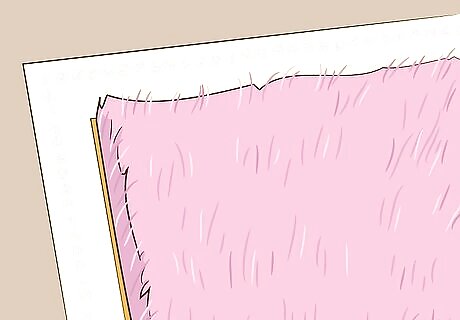
Layer rugs over carpet to break up the space. Disrupt the monotony of plain, dull carpeting with an array of attractive rugs. For instance, a bold solid color draped over an intricate woven pattern can lend a much-need jolt of personality to a basic beige carpet. A good rule of thumb is to look for layers that fall at the opposite end of the design spectrum of your base, such as bold or dark colors on top of lighter ones, or vibrant designs that offer a place for the eye to wander above neutral carpets. As an added bonus, these rugs can be swapped out at any time, giving you a nearly unlimited number of decorating options. Use a rug a that’s close to the carpeting, but not an exact match, to highlight subtle textural shifts.
Using Layered Rugs to Enhance a Room
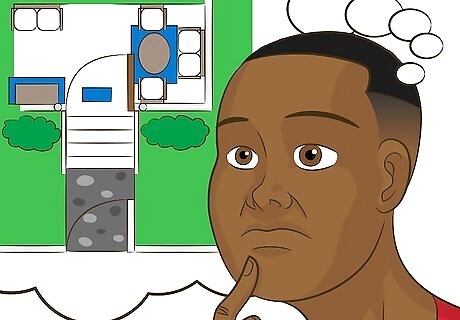
Arrange your rugs neatly to create a sense of organization. Layered rugs can be used to separate or define individual areas within a single room for an orderly, compartmentalized layout. This will not only make a smaller room look bigger, but will also make large rooms appear more put together. In this case, it's best to configure individual rugs in neat, precise angles. Look for rugs in various shapes and sizes to find one that’s just right for the space you’re trying to fill. Keep the rugs close together in their separate zones to keep your floor space from becoming too chaotic.
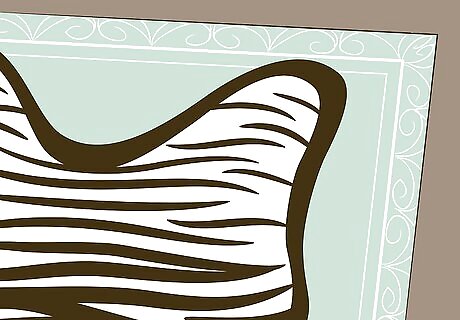
Create contrast with different types of rugs. There’s little sense in using more than one rug if they all do the same job. While selecting the rugs themselves, go with designs that are complementary in shade and pattern yet still visually distinct. The result will be an elegant contrast that adds extra depth without throwing the room out of balance. Contrast can come from color, texture, size or pattern, meaning you have an abundance of styles to choose from when personalizing your quarters. For example, place a faux-hide rug on top of a flat, woven rug. Add a small rug in another area of the room if you use a main rug to anchor a room. For instance, if you have a large rug in front of your sofa, you could add a small rug near the fireplace hearth in the corner. Experiment using rugs with mismatched shapes, like a fuzzy fur thrown over a flat area rug, or a circular rug extending from the corner of a square one.
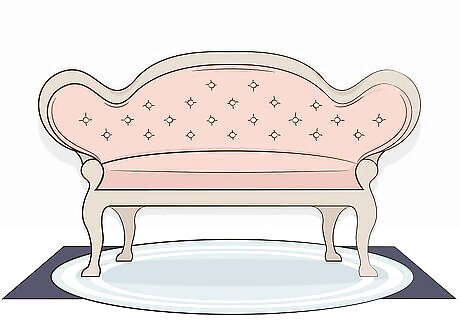
Position the rugs to draw attention to other furnishings. Rather than serving as focal decoration themselves, layered rugs can be strategically configured to lure a visitor’s eye to a particular spot. Situate the rugs near another piece or fixture you want to show off, such as an unusual vintage settee, flower arrangement, or well-stocked bookshelf. A well-placed rug arrangement makes a good method of presentation for impressive decor. Alternatively, you could attract attention by placing the rugs opposite the intended focal point for a kind of mirror-image symmetry.
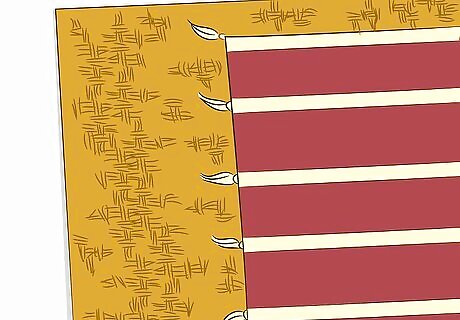
Provide texture to catch the eye. For more modern living spaces heavy on smooth, solid finishes, a few rugs with lush grains can keep the overall atmosphere from coming off as sterile. Similarly, if your home is filled with detailed surfaces like natural wood, marble, flat, smooth rugs will help pull the room in the other direction. There’s a rug (or three) for every home. Thick, plush rugs invite onlookers to relax in comfort, while rugs woven out of natural materials like leather, seagrass or rattan hint at contemporary style and sophistication. Faux animal hides are a versatile choice when other types of rugs don’t quite suit their surroundings. Or, use a Persian rug to add a pop of color and an eclectic flair. You can use rugs in all rooms, even kitchen and bathrooms. They add comfort and sophistication to any space.















Comments
0 comment